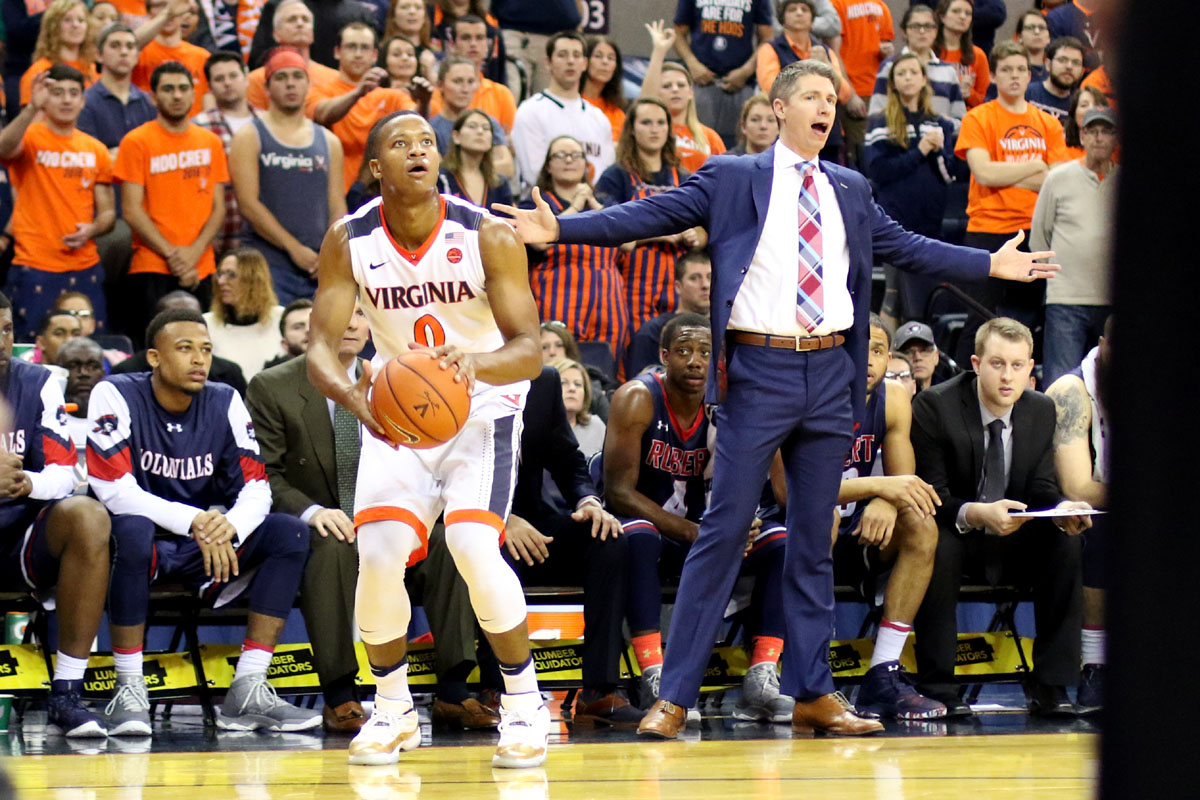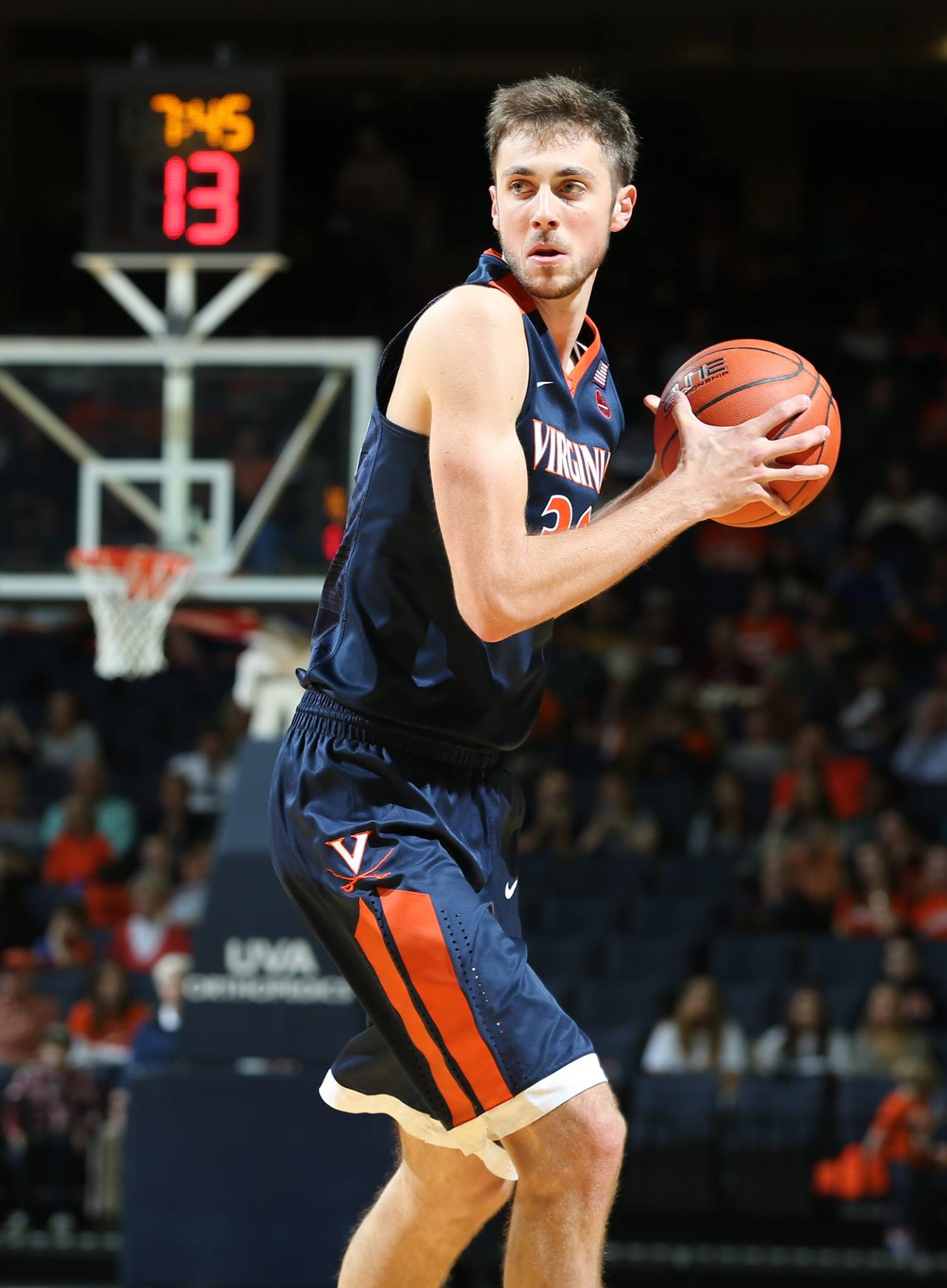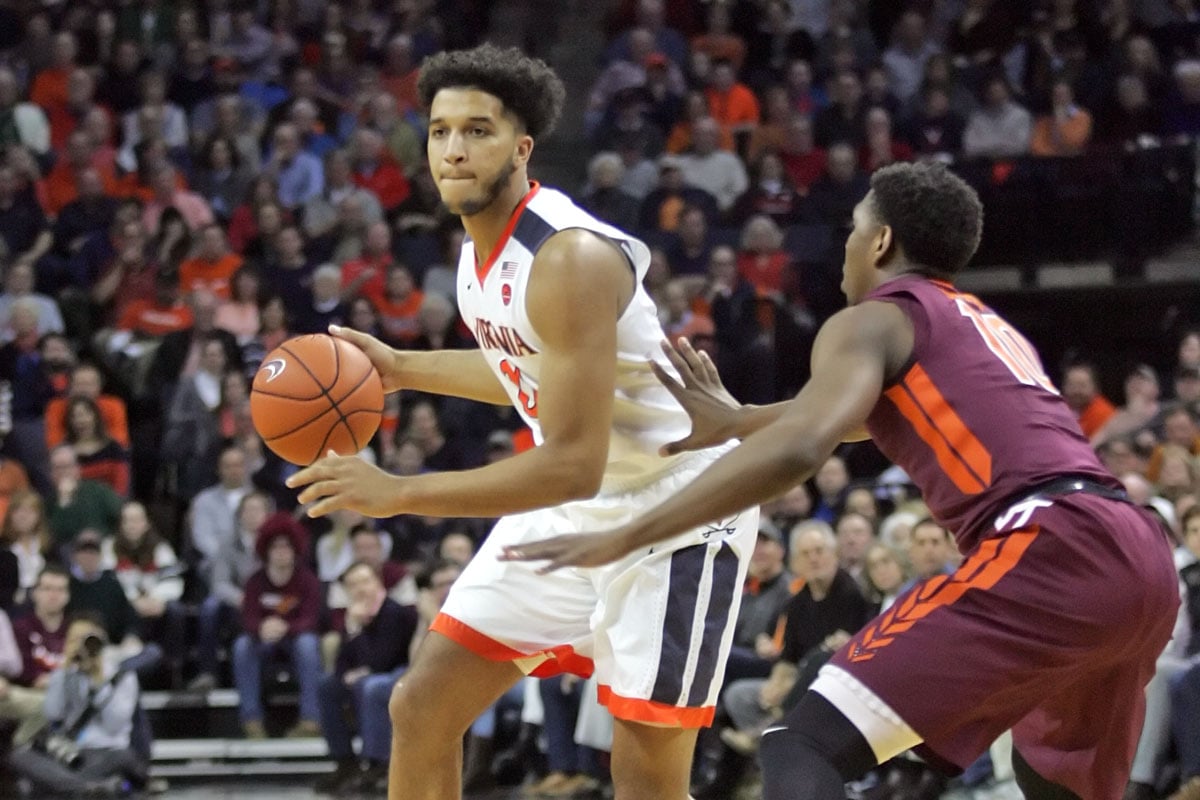
As the sports year winds down, Virginia fans have celebrated a National Championship with men’s tennis again, started to dial in on baseball’s postseason chances, and reached the “100 days to kickoff” portion of May. Even with all of those ways to stay in tune with the Hoos, however, almost every Cavalier fan still can’t wait until basketball season returns.
UVA, of course, will have a much different look next season. London Perrantes finished up his four years with at least one NCAA Tournament win each season, while three players opted to transfer out of the program at season’s end. Those developments have cleared the deck for Tony Bennett’s highest rated recruiting class to become major contributors moving forward.
Throw in Nigel Johnson, the first incoming graduate transfer of the Bennett era, and a pair of high upside 2017 recruits and, well, let’s just say there’s excitement in the air for what the future holds. That’s why there is intense interest in recruiting for 2018 and beyond and daily threads on player potential, roles, the schedule, and more.
It’s also why this is the perfect time for an “Ask The Sabre” article. There were so many good questions, though, that it morphed into multiple articles. Let’s get to it!
Small-ball minutes have increased significantly the past two years, especially as the season progressed. Is that trend set to reverse next season with a veteran core of front-court returnees and the addition of a stretch player in Jay Huff? ~ Toolie92
Sabre Editor Kris Wright: This is an interesting question considering the personnel changes over the past two offseasons. Remember that Malcolm Brogdon, Marial Shayok, and to some extent Evan Nolte were the players that allowed UVA to downsize and play four guards. All three are now gone. Devon Hall took on that role last season too, particularly once Isaiah Wilkins began to battle his illness late in the season.
The other half of the equation is on the opponent benches. Brandon Ingram, Jaron Blossomgame, and players like that are now gone from the ACC, but some teams like Virginia Tech and others can still play smaller lineups as basketball trends toward space and pace from the Golden State Warriors on down.
If you look at UVA’s roster, the only true candidate to make Virginia a small ball team is De’Andre Hunter. At 6’7” with guard skills – and more importantly, perhaps, shooting range – he can give you benefits in a small ball offensive lineup, but still defend in the post if the opponent stays with a traditional two-post lineup. Perhaps Hall could do it again or maybe 6’6” incoming recruit Marco Anthony, but I don’t think it suits either player in terms of maximizing potential contributions.
Drilling down a little bit more, the roster does provide some intrigue with the ability to play “small ball” style without actually going small. Jay Huff was mentioned in the question and he can do some guard things with shooting range at 6’11”. Mamadi Diakite showed some pick-and-pop skills in flashes last season at 6’9”. If Wilkins adds a little more range again this year, maybe he can space the floor out as the power forward a little better too.
So here’s my May prediction: I think we will see relatively limited small ball lineups with Hall or Hunter at the four, but I think we will see increasing small ball concepts offensively with Huff, Diakite, and Wilkins perhaps involved. I think everything from inverted sets with Huff and Diakite feeding someone like Ty Jerome or Hunter down low to maybe even big-to-big on-ball screens with Huff could find a way to be in play.

What do you think the most likely outcomes are for newcomers Jay Huff, De’Andre Hunter, Nigel Johnson, and Marco Anthony (this assumes Francesco Badocchi redshirts) in terms of share of playing time and impact on the games? ~ hoosnick
Sabre Editor Kris Wright: In the past, Coach Bennett has settled mostly into 8+2 rotations where 8 players are regularly involved and 2 more get spot minutes that can vary. So with that in mind, it seems likely that Ty Jerome, Kyle Guy, Devon Hall, Isaiah Wilkins, Jack Salt, and Mamadi Diakite figure in there somewhere. That means Jay Huff and De’Andre Hunter off of redshirt seasons plus Nigel Johnson and Marco Anthony figure to be the leaders for the rest of those 10 spots.
Hall and Wilkins, in my opinion, are virtual locks to start and should be in the 27 minutes minimum range on most nights. I think Jerome is a likely starter with Johnson picking up a lot of lead guard minutes as well. With Jerome’s ability at 6’5” to play multiple spots, I think he’ll probably be in the 25 minimum range. Johnson I think comes in and grabs 20 minimum from the get-go because he brings some versatile offensive skills to the table.
Guy and Hunter should eat up the majority of the non-Hall wing minutes and the difference in their size alone – Guy at 6’3” and Hunter at 6’7”could make them lineup flip-flops at times. It’s possible that Guy could be the lead guard for a few minutes here and there as well. Ultimately, I think Guy’s 3-point shooting and quick release get him to the 25 range with Hunter in the 20 range.
Beside Wilkins in the post, the starting job is one of the most interesting questions for the offseason. Does Salt stay there with his physicality and screening ability? Remember, he picked up starts here and there even with two pros, Anthony Gill and Mike Tobey, on the roster. Or does Diakite take up a step up his ladder of potential to provide a lot of defensive flexibility and some offensive versatility? Or does Huff emerge from a redshirt year as too enticing of an offensive matchup nightmare to leave off the floor from the get-go?
The answers there could change during the season. Ultimately, if Wilkins plays 27 or more of the available 80 minutes in the post, that leaves 53 minutes between the trio. I think Salt is a 20 maximum player to maintain his effectiveness against most teams and I think he probably stays in the 17 to 18 range he played last season. For now, let’s just say that Diakite and Huff average 17 minutes a game with the remaining minutes with foul trouble and first half play figuring out who gets the most on a given night.
Working backward from there, I think Anthony figures into the 10th slot with situational spot minutes but he’ll get more run in November and December to see if he can carve out a specific niche. Taking the maximum minutes guesses above, there are roughly 4 minutes per game left for this role.
In summary for the newcomers, I think Johnson probably leads the way in minutes simply because of his college level experience and the need at his position. I suspect Hunter and Huff will show great ability at times and struggle at times, at least early on, because that’s a general pattern for freshmen as they play their first college games. Foul trouble could be a reality defensively at first, for example, and that impacts minutes. Still, they’ll both be flirting with the range between 17 to 22 minutes as my May guess. Anthony probably learns behind Hall what it takes on both ends of the floor and picks up some run, but not a lot.
This all of course assumes that Francesco Badocchi redshirts and that no one joins the fold late over the summer.

Among the established players that we tend to take for granted, what is your opinion for the dark horse improvement candidate of the offseason? Will Jack Salt develop a stellar tip-in game or a jump hook? Will Devon Hall take his game up another level (as he has every year) and become an All-ACC performer? ~ Huff Daddy
Sabre Editor Kris Wright: With a question on the newcomers, I thought this would be a good one to play the opposite end of the spectrum. Both of the examples are good thoughts – Salt enters his third year of playing time and we’ve seen a lot of players start to settle in with consistency at that point in their careers here, while also adding something notable in terms of development. I think some screen-and-catch dunks, which we saw early against Florida, are a possible area of increased comfort for Salt.
As for Hall, is he the next one in line in the lead and succeed mold of Joe Harris, Malcolm Brogdon, and London Perrantes mold? I think that’s possible. He’s already the best perimeter defender on the team and he has the most lineup versatility on the roster right now as someone who has played every role on the floor except center. I don’t have a good feel for what Hall’s ceiling might be, but my hunch is that he will have a very good year and might get some low-level All-ACC recognition. Ultimately, he may just be an advanced stats warrior – someone that helps you win a lot of games without getting enough numbers to get all-league votes.
So where does that leave the heart of the question, the dark horse veteran to make a leap? I’m getting a Darion Atkins’ senior year gut feeling from Isaiah Wilkins. Atkins found a role early, started to develop, and then got sidetracked by an injury before he fell out of the rotation. He then emerged to have a strong senior season that saw him become one of the nation’s stingiest defenders.
Sound like Wilkins at all? He found a spot early, started to develop and had a solid 2/3 of the year as a junior before he got sidelined by an illness and fell out of the rotation. I think we may see the best Wilkins yet with some end-of-year motivation fueling his offseason. I think ACC Defensive Player of the Year and other possibilities are at least on the radar.
This series is presented by our newest sponsor Bundoran Farm, where you can Create Your Virginia Legacy. To see the Ask The Sabre articles in the archives, just click here. Visit Bundoran Farm here.




